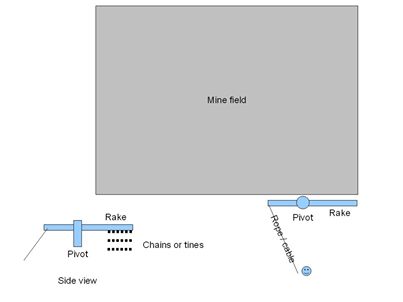Disruptive innovation breakthrough from incremental improvements
Disruptive innovation breakthrough from incremental improvements. The 3D controller in the video uses brute force pattern recognition and cheap hardware. It’s what Ray Kurzweil claims will lead to the Singularity.
Cheap camera based 3D controllers have been on the market for close to 2 years. The interesting part of this video is how they do it. They have a large database of images for hand positions then compare what the camera sees to an image in the database. That is an extremely crude approach but the speed of cheap hardware makes it economical.
Most people view breakthroughs as rare and hard to achieve. Using the random creativity based approach that is very true. Business leaders want the disruptive breakthroughs because of the huge profit potential. If you are not using Predictive Innovation your only option is incremental improvements and mediocre little to no increases in profits. However you can achieve breakthroughs with incremental improvements. Read more
Predictive Innovation at TED
One dimension used by Predictive Innovation is the 3 Scales of the Alternatives. Cesar Harada used the 3 scales to create a better boat to clean up oil spills.
 When Cesar Harada attempted to make a boat to zig-zag back and forth to efficiently mop up an oil spill he found that a traditional boat with a rudder in the rear was difficult to control. So he applied Inversion to solve the problem. Instead of having the rudder in the rear he put the rudder in the front, that helped. Inversion is just one technique for applying the 5 Directions of the Predictive Innovation Alternatives Grid. It is a very powerful technique because it can fundamentally change the problem and provide an entirely new set of 15 Alternatives. In this case Cesar only used a simple change but that was enough to get the desired result.
When Cesar Harada attempted to make a boat to zig-zag back and forth to efficiently mop up an oil spill he found that a traditional boat with a rudder in the rear was difficult to control. So he applied Inversion to solve the problem. Instead of having the rudder in the rear he put the rudder in the front, that helped. Inversion is just one technique for applying the 5 Directions of the Predictive Innovation Alternatives Grid. It is a very powerful technique because it can fundamentally change the problem and provide an entirely new set of 15 Alternatives. In this case Cesar only used a simple change but that was enough to get the desired result.
 After moving the rudder he then thought about having more than 1 rudder. He moved to multiple rudders. Then he finally moved to having a continuous rudder. That is the 3 Scales of the Predictive Innovation Alternatives grid:
After moving the rudder he then thought about having more than 1 rudder. He moved to multiple rudders. Then he finally moved to having a continuous rudder. That is the 3 Scales of the Predictive Innovation Alternatives grid:
- Single
- Multiple
- Continuous
The 3 Scales are how I predicted in 2004 that s service like Youtube would be the next disruptive innovation for video.
The 15 Alternatives is a key part of how Predictive Innovation gives you a structured approach to describing the complete idea space. It can help you find new and better solutions and show you the next big thing.
You can learn the entire 15 Alternatives through a new stand alone self-paced video tutorial. The 15 Alternatives apply to every dimension, it’s the essential tool for describing the entire idea space. This self paced online video tutorial will open your eyes to see the entire idea space in crystal clear detail.
Click here to register for Predictive Innovation Core Skill: Alternatives.
Zero Mines, cheap-low-tech land mine clearing tool
Zero Mines is a group of people worldwide working on Open Source solutions for clearing land mines so people can grow food, travel, and live safely. Here is my suggestion.

Over 100 million land mines have been deployed around the world. Most of the places where these land mine are located are impoverished. The area that needs to be cleared is vast. The ideal solution would use cheap, easily available materials, that can be put together by anyone so that local people can quickly clear their own land.
The standard military approach to clearing a mine field is to use a heavily armored vehicle with a motorized flail to trigger the landmines. Armor is one way of staying safe while detonating a mine but not the only way. Distance is another.
A strong rope is cheap and can pull a heavy object across a mine field from a distance to detonate any mines. But you typically must go forward into a mine field. So how can you pull something towards you without first putting it in front of you? There is a very simple way.
The device I described fits those requirements. It is just a big rake rotating on a pivot pulled by a rope or cable from a safe distance to trigger mines.
1. place the pivot
2. pull the rope or cable from a safe distance or behind sand bags
3. sweep the rake over area to be cleared
4. move pivot / rake to cover more area
5. repeat
Dragging an object a distance from the arm would reduce the damage to the arm but even if the arm is damaged it is cheap and easy to replace. This might not be enough for all uses of the land or all types of land but can quickly clear an area for human travel and light use. If you need to go deeper use a heavier object and tines to dig up the ground.



 Predictive Innovation Training
Predictive Innovation Training Predictive Innovation: Core Skills Book
Predictive Innovation: Core Skills Book RoundSquareTriangle.com
RoundSquareTriangle.com